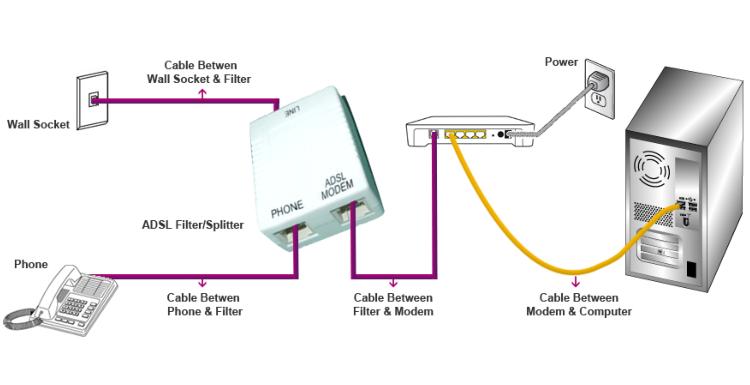How it will probably look

What are the basic components of a home network
To set up a basic home network you require some basic components. These include;
ADSL2+/COAX cable and port.
Your ISP (in Britain anyway) will most likely be feeding off of BT’s telephone lines(unless you are with virgin who have their own lines) the signal is transmitted to your house and comes inside and to the router via ADSL2+ or COAX. If you have neither of these ports the ISP will fit one for you.
A modem and/or a router
The router will usually be provided to you by your ISP(internet service provider). It is recommended that you use their router on your network as A. it is free and B. it is configured to run properly on the ISP lines and give out equal signal to all devices but this can be strenuous. Your other option is to buy a third party router and put the ISP router into modem mode, plug in your new shiny £400 asus ROG rapture, enjoy the optimized bandwidth to your designated purpose(in this instance it would be gaming).
Your router is in charge of where all the traffic in your network goes and sends the data packets to the correct device. For example, i send a request to connect to google, the router gets this request from my device and by my devices unique set of identifiers it knows my device sent a request to connect to google, where to send the request and where to send it once the ping comes back.
A device you wish to connect.
Whether it be a mobile phone, laptop, desktop, mac, tablet and in today “internet of things” your kettle. All devices connect to the network via wired connection or wireless. Devices are wire connected via Ethernet cable(RJ45) or wireless via wireless protocol the current generation being 802.11ac wave 1/2.
How do these connections work?
Your router has a default IP address which is that of the manufacturer for example the default IP for D-link and Netgear routers is 192.168.0.1. Connecting your device to the network via wireless connection may seen as simple as clicking two buttons and watching the magic work but it is so much more than that.
1.Your router broadcasts the network SSID(service set identifier) for you to find it.
2. You connect to the router and input your password it then authenticates your connection and allows network traffic on your device.
3.Your device is assigned a unique IP, subnet mask and default gateway by the router via DHCP (dynamic host configuration protocol) This is how it identifies your device along with its MAC address(media access control address)
4. You send requests to the web and your request is filtered through the router and out into the web, sent back to you, routed back through the router and displays the page you wanted to see in a matter of seconds.